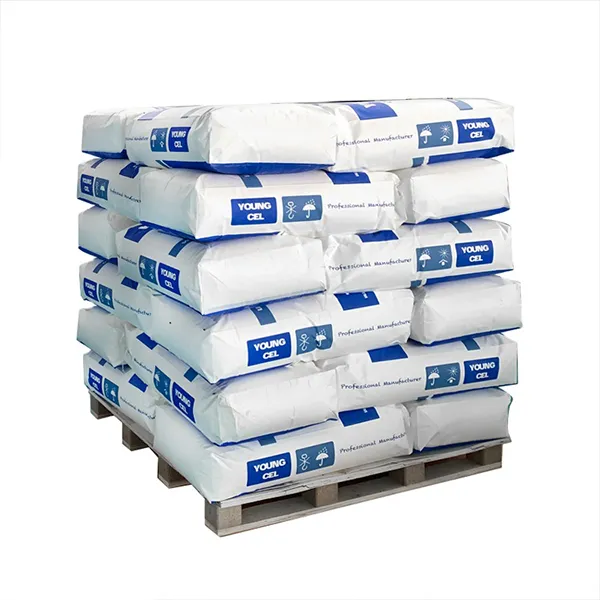Cellulose for Industrial Applications A Versatile Biopolymer
Cellulose, the most abundant organic polymer on Earth, is a structural component of plant cell walls. As a biopolymer made up of glucose units, cellulose has gained significant attention in various industrial applications due to its unique properties. With the increasing demand for sustainable and eco-friendly materials, cellulose is emerging as a crucial player in multiple sectors, including textiles, food, pharmaceuticals, and biofuels. This article explores the versatility of cellulose and its transformative role in industrial applications.
1. Source and Production of Cellulose
Cellulose is derived from natural sources such as wood, cotton, and agricultural residues. The extraction and processing of cellulose involve mechanical and chemical methods, leading to several forms, including microcrystalline cellulose, nanocellulose, and regenerated cellulose. The choice of processing technique influences the properties of cellulose, allowing it to be tailored for specific applications. The push for sustainability in recent years has further highlighted the importance of cellulose production from renewable sources, reducing reliance on fossil fuels and synthetic materials.
2. Cellulose in Textiles
The textile industry has been one of the primary beneficiaries of cellulose. Regenerated cellulose fibers, such as rayon, lyocell, and modal, are produced from wood pulp and are known for their softness, breathability, and biodegradable characteristics. These fibers serve as an alternative to conventional synthetic fibers like polyester, which contribute to environmental pollution and waste. Cellulose-based textiles not only offer comfort and aesthetic appeal but also align with eco-friendly consumer preferences. The increasing awareness of sustainability has led to a growing market for organic cotton and regenerated cellulose fabrics, promoting responsible consumption patterns.
3. Cellulose as a Food Additive
In the food industry, cellulose serves as a versatile additive with various functionalities. It can act as a thickening agent, stabilizer, and emulsifier, providing improved texture and consistency in food products. For instance, microcrystalline cellulose is commonly used in processed foods, dairy products, and sauces, contributing to their viscosity and mouthfeel. Furthermore, cellulose is a source of dietary fiber, promoting digestive health when ingested. The demand for natural and healthy food additives positions cellulose as a key ingredient in the formulation of clean label products, which consumers increasingly prefer.
'cellulose for industrial'

4. Pharmaceutical Applications
The pharmaceutical industry has also recognized the potential of cellulose as an excipient in drug formulations. It serves various roles, including acting as a binder, filler, or disintegrant, facilitating the efficient delivery of active pharmaceutical ingredients (APIs). Due to its non-toxic nature and compatibility with numerous compounds, cellulose-based excipients can enhance the bioavailability of drugs while ensuring patient safety. Additionally, innovations in nanocellulose have paved the way for new advancements in drug delivery systems, enabling more targeted therapies and personalized medicine.
5. Biofuels and Sustainable Energy
With the global shift toward renewable energy sources, cellulose has gained traction as a feedstock for biofuels. Cellulosic biomass, derived from agricultural waste and non-food crops, can be converted into bioethanol and other biofuels through enzymatic and chemical processes. Utilizing cellulose for energy production is particularly advantageous, as it helps reduce greenhouse gas emissions and dependence on fossil fuels. The development of efficient processing technologies for converting cellulose into biofuels is crucial for constructing sustainable energy systems in the future.
6. Challenges and Innovations
Despite its potential, the industrial use of cellulose faces challenges, including the need for cost-effective production methods and the development of processing technologies that can efficiently convert cellulose into valuable products. Ongoing research focuses on enhancing cellulose properties and exploring new applications, such as biodegradable packaging materials and advanced composites. Innovations in cellulose nanotechnology, such as the development of nanocomposites, promise to expand the scope of its utility across various industries.
Conclusion
Cellulose stands out as a versatile biopolymer that holds immense promise for industrial applications. From textiles to food products, pharmaceuticals, and biofuels, cellulose is transforming traditional practices and contributing to a more sustainable future. As the demand for eco-friendly materials continues to rise, the industrial potential of cellulose is likely to expand, offering new opportunities for innovation and sustainable development. By harnessing the power of this natural polymer, industries can move towards a greener and more circular economy, aligning with global sustainability goals.
-
Rdp that The Revolutionary Polymer Powder Transforming Modern Construction MaterialsNewsAug.11,2025
-
Hpmc Powder that Versatile Additive for Detergents and Personal CareNewsAug.11,2025
-
Hpmc Hydroxypropyl Methylcellulose that Essential Building Material Additive from Shijiazhuang Gaocheng YongfengNewsAug.11,2025
-
Hydroxypropyl Methyl Cellulos Hpmc that Essential for Construction ApplicationsNewsAug.11,2025
-
Mhec Powder that Revolutionizing Construction Chemistry with Cellulose Ether SolutionsNewsAug.11,2025
-
Industri Hpmc that The Global Backbone of Advanced ConstructionNewsAug.11,2025




